Notes
Best of the Bag 2012: Visual Skirmishes in the War on Women
As the battle over reproductive rights played out in state houses across the country, in 2012 BagNews saw women portrayed through the lens of familiar memes: the seductress, the sex object, the subjective submissive, the second fiddle (we’ll get to the supportive spouse and the supermom later). As usual, we explored these alliterative portrayals whenever they caught our eye.
Most of this analysis was provided by Karrin Anderson, Bag’s resident expert on gender codes. Karrin called out the “sex sells” mentality of Super Bowl advertising and the sexually exploitive nature of presenting even feminist issues in American media because, as we all know, you can’t make a point about realistic female bodies in this day and age without pressing two naked women together in a suggestive manner:
It’s notable that when media outlets like ABC News, Fox News, and Salon ran “serious” stories about the shrinking BMIs of fashion models, many chose to feature cropped versions of the racier photos featuring the two women in intimate poses. The edited photos retained their salacious sexiness but excised the bothersome statistics. Contemporary standards of beauty certainly leave many women hungry . . . too bad society hasn’t lost its appetite for this particular brand of titillation.
Of course, women sexualized in advertising or in articles about women’s bodies is nothing new. American celebrity is often based in targeted, sexualized appeal, though usually not as embarrassingly as evident in the Vanity Fair spread on Mika Brzezinski and Joe Scarborough. Karrin wrote:
Not a stripper, you say? Well, what else do we call women who dance on tables for men’s spectatorial enjoyment? Although the brief article that accompanies this picture emphasizes both Scarborough’s and Brzezinski’s various flirtations (with each other, Roger Ailes, and—in Scarborough’s case—the American electorate), the image tells the familiar story of a man who commands the attention of others and a woman who seeks only the attention of that man.
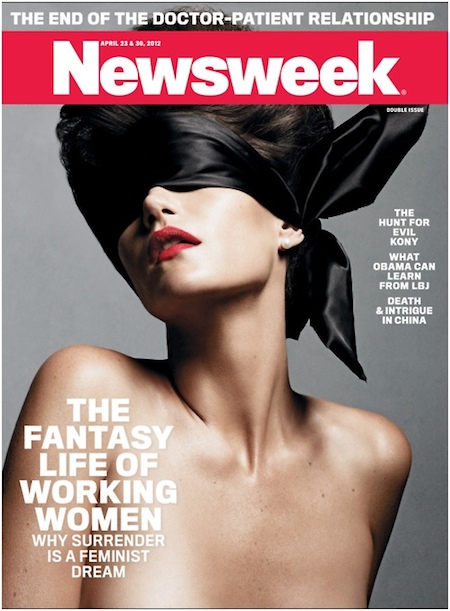 You don’t have to travel far to get from Mika-on-a-table to Newsweek’s Surrender cover where the dominant (pun intended) theme is the necessary self-subjugation of the ambitious career woman. After all, career success, if not tempered by “Mommy Guilt”, must be tempered, no? We found it interesting that Newsweek choose to meet this sub-ideal with an idealized image of glamour and vulnerability:
You don’t have to travel far to get from Mika-on-a-table to Newsweek’s Surrender cover where the dominant (pun intended) theme is the necessary self-subjugation of the ambitious career woman. After all, career success, if not tempered by “Mommy Guilt”, must be tempered, no? We found it interesting that Newsweek choose to meet this sub-ideal with an idealized image of glamour and vulnerability:
…Stereotypes about women (as citizens, voters, and workers) are often enforced visually, which is why the S&M aesthetic is used to sell everything from shoes to suits to booze; it’s even a go-to meme in politics, deployed to try to convince people to vote, go vegan, and stop patronizing circuses. Roiphe and Newsweek would have us believe that this “trend” represents a complicated and conflicted new feminism, but really it’s just the same old patriarchy at work.
There were attempts to exploit the exploitative display of women’s bodies in 2012, but it’s notable that few of these attempts happened in the United States. The Pussy Riot trial in Russia and FEMEN’s protests come to mind. The latter was analyzed by Bag contributor Madeleine Corcoran who singled out Guillaume Herbaut’s award winning photo of FEMEN’s nearly full frontal protest against human trafficking noting,
What this portrait also tells us is that, exposed or hidden, women’s bodies are a hot topic. (I mean, see all the worry over the fact that the woman in the World Press winning photo is wearing a burkha). Veiled or on display, the female body is defined by sexuality in a way that male bodies are not. . . With this simultaneously innocent and knowing revelation of the female torso, I think Shevchenko is also asking us to realize how “exposed” or “hidden” are false distinction — that it is the human form and, as such, represents identity, physicality and power.
Maybe it’s only a matter of time before such protests arrive in the United States. We’ve covered a similar demonstration recently. But in a culture dominated by advertising-backed media, we don’t anticipate that women’s issues will get the FEMEN treatment any time soon.
(Photo 1: screen clip, 2012 Go Daddy Super Bowl ad, Photo 2: Victoria Janashvili, Plus Model Magazine, Photo 3: Mark Seliger, Vanity Fair, Photo 4: Newsweek, April 23, 2012 issue, Photo 5: Guillaume Herbaut.)
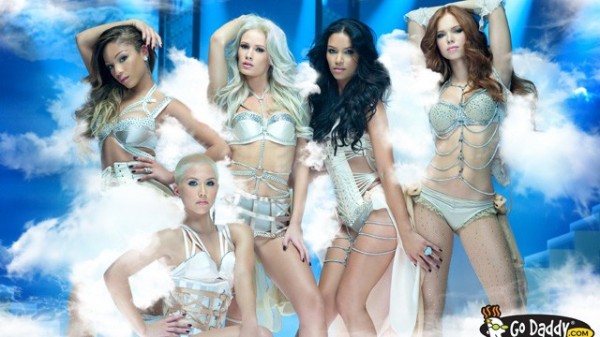
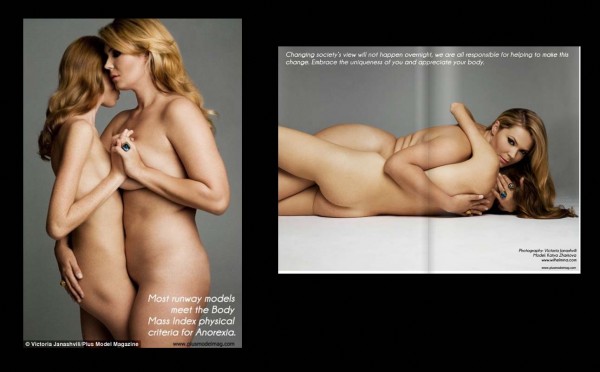
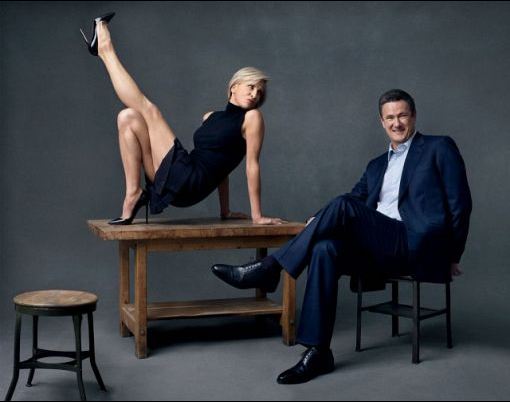


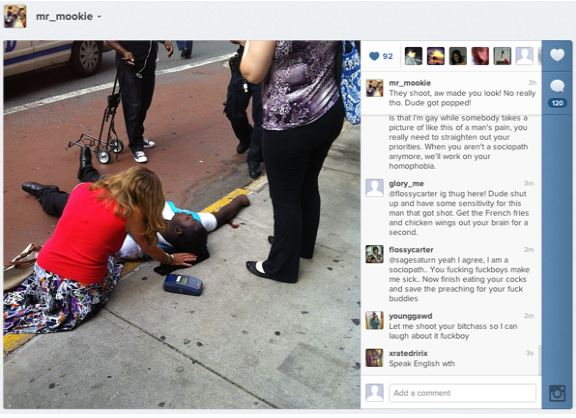
Reactions
Comments Powered by Disqus